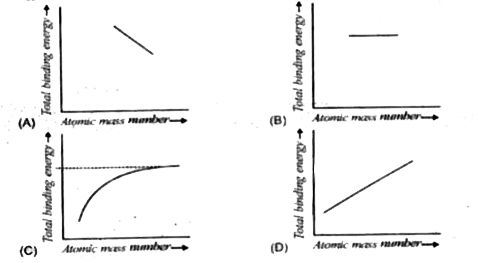Write the relation between atomic mass and equivalent weight?
To find the relation between atomic mass and equivalent weight, follow these steps:
Step 1: Understand the Definitions
- Atomic Mass: The mass of an atom of a chemical element, typically expressed in atomic mass units (amu).
- Equivalent Weight: The mass of a substance that will combine with or displace a fixed amount of another substance (usually 1 mole of hydrogen atoms).
Step 2: Define Equivalent Weight Formula
The equivalent weight (EW) can be defined as:
Equivalent Weight=Molecular WeightValency Factor
Step 3: Relate to Atomic Mass
For elements, the equivalent weight can also be expressed in terms of atomic mass (AM):
Equivalent Weight=Atomic MassValency
Step 4: Example for Clarity
- For an acid like sulfuric acid (H₂SO₄), the equivalent weight can be calculated as:
Equivalent Weight of H₂SO₄=Molecular Weight of H₂SO₄Basicity
- Here, the basicity of H₂SO₄ is 2 (it can donate 2 H⁺ ions).
Step 5: Generalize for Bases and Salts
- For a base, the equivalent weight is:
Equivalent Weight of Base=Molecular WeightAcidity
- For salts, it is:
Equivalent Weight of Salt=Molecular WeightValency
Conclusion
Thus, the relation between atomic mass and equivalent weight can be summarized as:
Equivalent Weight=Atomic MassValency
- Atomic Mass: The mass of an atom of a chemical element, typically expressed in atomic mass units (amu).
- Equivalent Weight: The mass of a substance that will combine with or displace a fixed amount of another substance (usually 1 mole of hydrogen atoms).
The equivalent weight (EW) can be defined as:
Equivalent Weight=Molecular WeightValency Factor
For elements, the equivalent weight can also be expressed in terms of atomic mass (AM):
Equivalent Weight=Atomic MassValency
- For an acid like sulfuric acid (H₂SO₄), the equivalent weight can be calculated as:
Equivalent Weight of H₂SO₄=Molecular Weight of H₂SO₄Basicity
- Here, the basicity of H₂SO₄ is 2 (it can donate 2 H⁺ ions).
Step 5: Generalize for Bases and Salts
- For a base, the equivalent weight is:
Equivalent Weight of Base=Molecular WeightAcidity
- For salts, it is:
Equivalent Weight of Salt=Molecular WeightValency
Thus, the relation between atomic mass and equivalent weight can be summarized as:
Equivalent Weight=Atomic MassValency
Topper's Solved these Questions
Similar Questions
Knowledge Check
- Question 1 - Select One
Relation between vapour density and molecular weight
AMolecular weight = 2/Vapour densityBMolecular weight = 2 × Vapour densityCMolecular weight × 2 = Vapour densityDNone of these
Which of the following graphs might represent the relationship between atomic mass number (i.e "atomic weight”) and the total binding energy of the nudeus, for nuclii heavier than Sr?
 View Solution
View SolutionState the relation between atomic number and atomic mass for light elements. State which elements are considered radioactive giving reasons.
View SolutionWrite the relation between pressure and volume for an adiabatic change in an ideal gas.
View SolutionOne atomic mass unit is equivalent to …………. Energy
View SolutionHow is the size of nucleus experimentally determined ? Write the relation between the radius and mass number of the nucleus. Show that the density of nucleus is independent of its mass number.
View SolutionWrite the relation between coefficient of correlation and regression coefficients
View SolutionWrite the empirical relation between mean, mode and median.
View Solution

